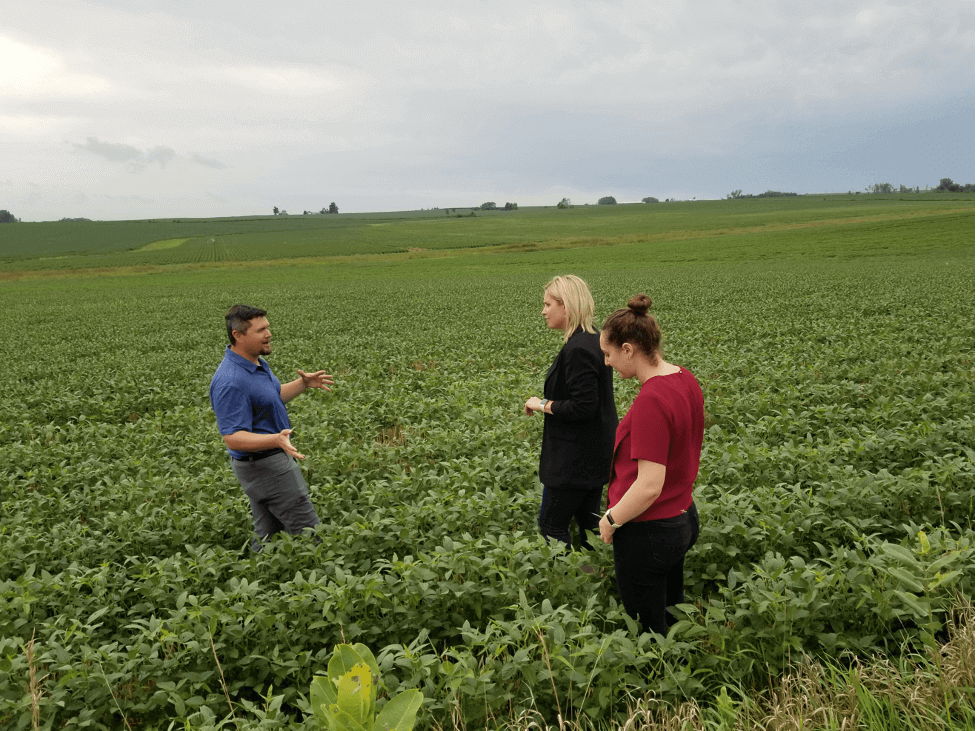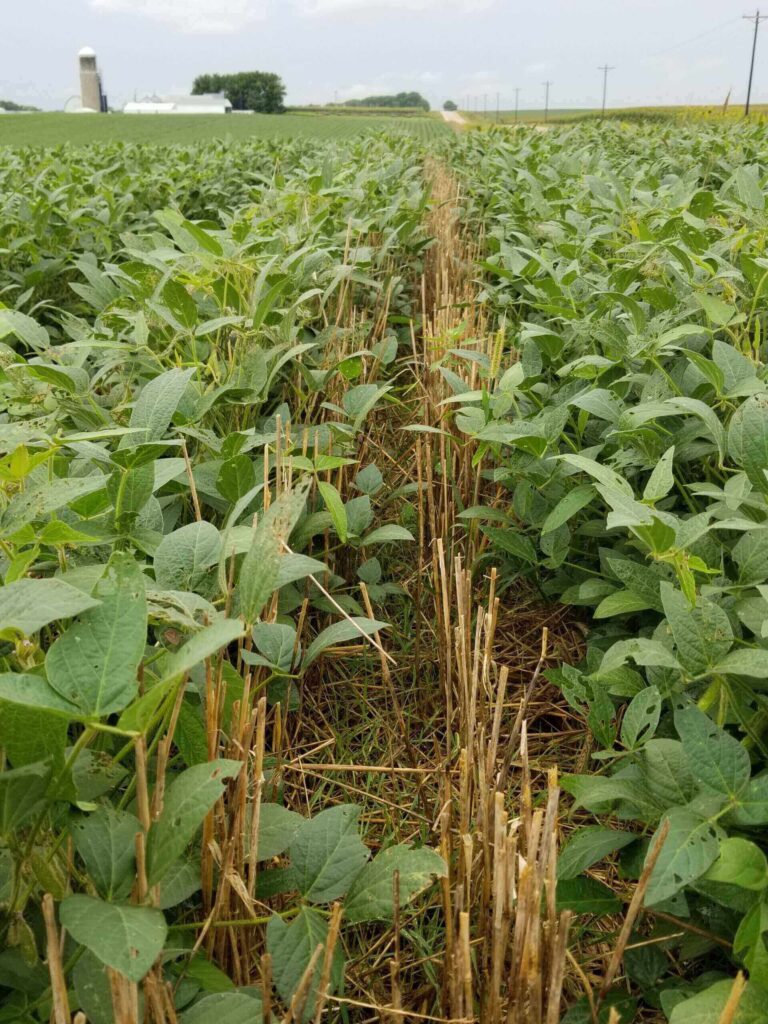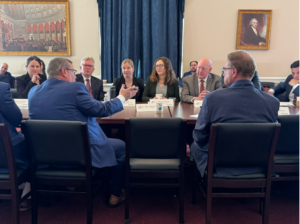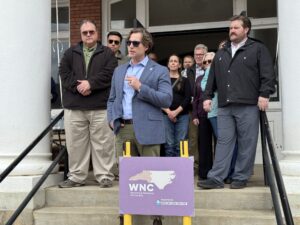May 9, 2022
—
In 2019, floods devastated the middle of the country, causing massive crop losses and affecting 14 million people. Since then, Midwestern communities and farms have faced a long road to recovery, all while dealing with more flooding every year.
But communities aren’t defenseless against such impacts. Innovative solutions can reduce flood risk, while bringing a slew of additional benefits for farming communities.
One such solution is multi-cropping. Multi-cropping is a regenerative agriculture practice in which farmers plant cover crops, or added crops that improve soil quality. On top of improving soil quality, this practice can improve water quality, reduce agricultural runoff, and maintain farmers’ crop yields and income. It may even reduce flooding.
This post will examine the effects of 2019’s spring floods on agriculture and show how multi-cropping can reduce future flood risk. We’ll end with a case study on an AFC-supported pilot project in Iowa.
Midwestern flooding
The importance of innovative solutions like multi-cropping is clearly seen in the impacts flooding has on Midwestern states, especially on agriculture. No time was that more apparent than in 2019, when the region saw its wettest year on record.
That year’s rainfall upended entire communities, wiping out crops and damaging crucial roads and infrastructure in rural communities. In 2019, the rains also delayed crop planting, shortening the growing season and sending a ripple across rural communities. With millions of acres going unplanted, the region lost $6 billion in crop sales alone, by one estimate.
But it wasn’t all a wash. Engineered flood defenses successfully protected major cities from prolonged flooding. Many small communities, however, were still hit hard, dealing with flooding for 140 straight days and highlighting the need for additional flood solutions.

Multi-cropping, a flood solution for agricultural communities
Because cover crops can hold soil in place and take up excess water during wetter months, it makes sense that multi-cropping can be a viable flood solution. And there are several examples of cover crops helping rural farms and forests store runoff and reduce flooding on farms and downstream communities:
- After the 2011 Missouri River Flood, for example, researchers from the University of Nebraska and Iowa State University recommended planting cover crops to protect the soil and rebuild soil life before the 2012 cropping season.
- And in 2019, researchers from the Minnesota Department of Natural Resources modeled using cover crops on all row crop areas (mainly corn and soybeans) across the 323-square mile Shakopee River Watershed in Northeast Minnesota. The model found that during historical rainfall patterns, cover crops reduced peak flow and run-off, especially during the non-growing seasons.
All these benefits are why the Department of Agriculture aims to double the acres farmers plant with cover crops by 2030.
AFC’s pilot project in Iowa
Despite this research, multi-cropping is still generally unexplored as a flood solution. That’s why AFC supported a three-year multi-cropping project in Northeast Iowa, led by Northeast Iowa Resource Conservation & Development in collaboration with the Iowa Flood Center.
The project, which took place at FLOLO Farms outside of West Union, Iowa, focused on a type of multi-cropping called relay cropping. In relay cropping, farmers plant a high-fiber crop, like cereal rye, at the same time as a low-fiber one, like soybeans. Though cereal rye and soybeans are typically planted and harvested at different dates, they have overlapping growing seasons, making relay cropping something farmers can do without losing any crops.
The project evaluated results from 19 trials, using models to mimic watershed conditions and floods to better understand the environmental and economic benefits of relay cropping. Here are the project takeaways so far:
Multi-cropping can reduce flood risk
- Compared to an adjacent corn field, relay-cropped fields saw 20% higher evapotranspiration rate – the rate by which water moves from the earth to the atmosphere.
- The models found that conventional agriculture replaced by relay cropping would reduce flooding across the watershed; however, how much flooding relay cropping prevents depends on the size of the flood and when the flood occurs.
- As a flood increases, relay cropping becomes less effective. And if flooding happens in the winter (when the grounds are frozen) or early spring (before crops are planted), relay cropping has little effect.
- Compared to conventionally managed fields, relay-cropped fields saw improved soil structure that allowed water to be absorbed faster, leading to less flooding.
Multi-cropping is smart economics
- Relay cropping averaged $50.90 higher net profit per acre than just growing soybeans.
- For context, between 1988 and 2016, Iowa’s flood-related property and crop damages totaled around $18 billion. So even reducing that figure by 5% would avoid $800 million in damages.
In August 2021, AFC and the Northeast Iowa Resource Conservation & Development hosted AFC Federal Champion Rep. Ashley Hinson at an event in West Union, Iowa, to showcase these many benefits of multi-cropping, while giving an update on the project. Experts from the Iowa Flood Center also participated.
Preparing for future Midwestern floods
Though coastal communities and sea level rise typically come to mind when we think of flooding, riverine and flash flooding are crucial concerns that extend across the country. Recent years’ spring floods show as much.
We hope this pilot project in Iowa provides insights on a viable way to fight floods for similar agricultural communities across the Midwest.
—
This blog post was authored by Brandon Pytel, Communications Associate, and Yasmine Dyson, Senior Strategy Associate.






